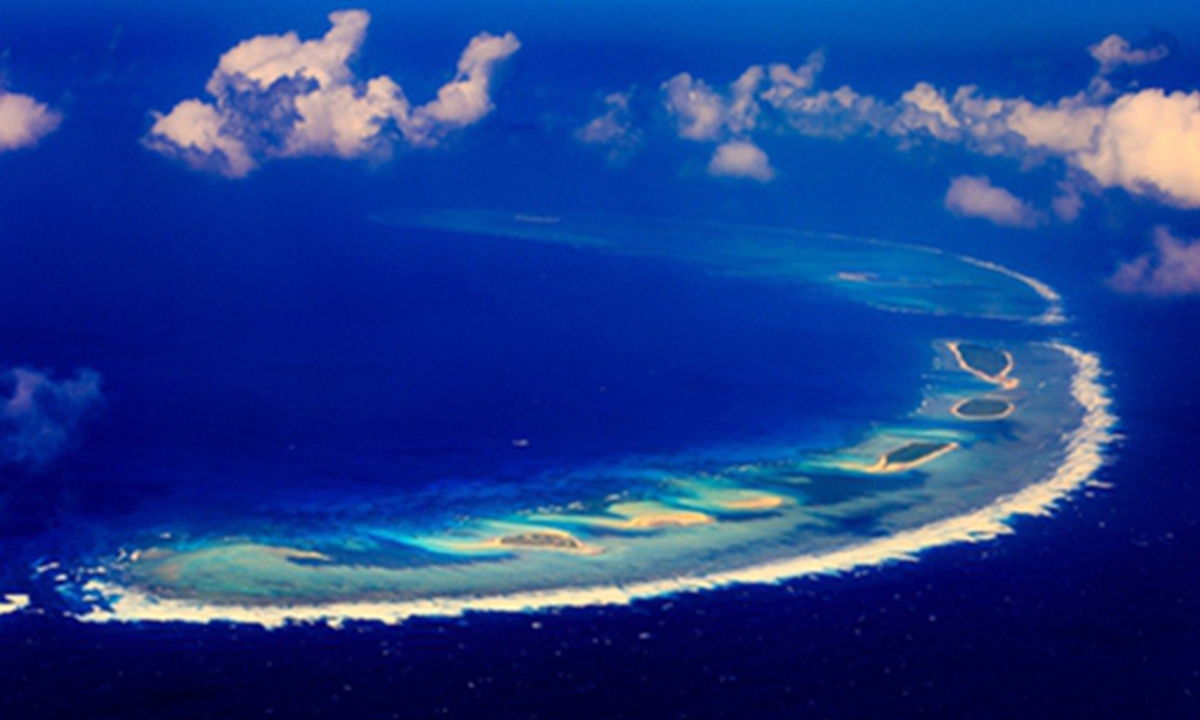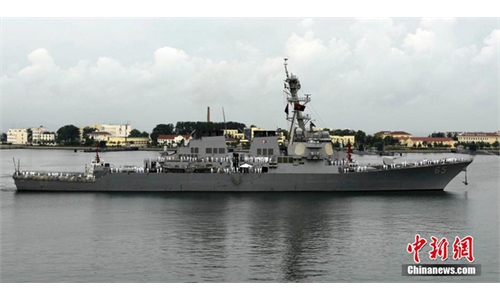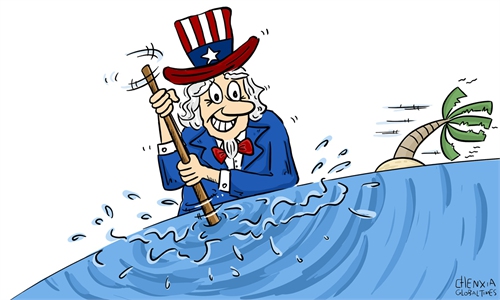US submarine may have made a 'stupid mistake' in the South China Sea on the recent collision: expert

Xisha Islands in the South China Sea File Photo: VCG
US officials recently revealed that the US Seawolf-class nuclear attack submarine USS Connecticut (SSN-22) hit an "unknown object" while submerged on October 2 in international waters in the South China Sea.
Without any details released at the moment, the issue has sparked the curiosity of many Chinese netizens who are guessing what the "unknown object" could be. The latest possible explanation on Chinese social media platforms is that the object could belong to the China South China Sea Aquaculture and Fisheries Company, citing an alleged report by Agence France-Presse (AFP) that said the company's yellow croaker breeding cage was recently hit by an "unknown object" and a total of 25,000 kilograms of aquaculture products, worth about 400 million yuan ($62 million), were lost.
This is likely a rumor as the Global Times could not verify the so-called AFP's report, nor any other main international media platforms. There is no company with the name China South China Sea Aquaculture and Fisheries Company on the Chinese corporate database Tianyancha, the Global Times found.
Chinese Foreign Ministry spokesperson Zhao Lijian on Monday urged the US to take a responsible attitude, give a detailed account of what happened as soon as possible and make a satisfactory explanation to the international community and regional countries.
"Where exactly did the accident take place? Did the accident cause nuclear leakage and pollute the marine environment? Will this accident impact the navigation safety and fishery in the area where it took place?" asked Zhao.
Experts reached by the Global Times believe the "unknown object" collided with the USS Connecticut is more likely an artificial fish reef rather than a breeding cage.
"The US' silence on the issue is probably because they made a stupid mistake and are too embarrassed to talk about it," experts said.
A Chinese marine fishery expert who requested to remain anonymous told the Global Times on Tuesday that it is very unlikely that the US submarine hit a Chinese fishing gear in international waters in the South China Sea as most of China's yellow croaker breeding cages are located in East China's Fujian. The fish raised in the South China Sea belong to other species like cobias.
Moreover, China's fish breeding cages are mostly located in an enclosed sea area and only a few are in the open sea, according to the expert.
The marine fishery expert was echoed by a Beijing-based naval expert, Li Jie. Li told the Global Times on Tuesday that it is more likely that the US nuclear submarine hit an artificial fish reef like a shipwreck or cement reef.
Seawolf-class nuclear submarines like the USS Connecticut use passive sonar to identify and locate targets. Passive sonar is highly covert and has long detection range and it is the preferred way for submarine underwater detection in peace-time operations and daily sailing, according to Li.
When it comes to offensive maneuvers or navigating in environments with complex bottom topography, submarines would change to positive sonar for detection. But some recent analysis suggest that submarines would also use passive sonar to cover their tracks sometimes, Li noted.
The bottom of the South China Sea is famously complex and not friendly to sonar detection.
Under this circumstance, the possibility that the accident happened because the US crew failed to switch to positive sonar in a complex navigation environment could not be ruled out, Li said, noting that US submarines have had collision accidents due to operational errors in the past.
For example, in February, 2001, the Los Angeles class nuclear-powered US submarine USS Greeneville struck and sank a Japanese fishing vessel identified as the Ehime Maru during routine operations off the coast of Hawaii, killing nine.
In November, 2002, another Los Angeles class nuclear-powered submarine, the USS Oklahoma City, damaged it's periscope and lifting gear when it collided with a tanker in the Mediterranean.
In 2005, the nuclear attack submarine USS San Francisco ran into an undersea mountain in the waters near Guam, killing one of its crew.
As to the US military's silence over the USS Connecticut's recent accident, Li said it is linked to the previous flaunt of US presence in the South China Sea, which "reinforces the possibility that the USS Connecticut made an embarrassing stupid mistake in the South China Sea that they do not want to talk about."



